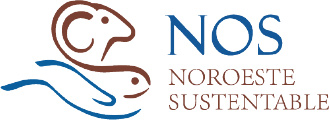Los Cabos, BCS. November 9, 2022. As part of the Summit 2023 program of Sea of Cortez Forum, Alejandro Robles GonzalezPresident of NOS Sustainable Northwestparticipated in the conference Bivalve Shell-based Artificial Reefs in Low-Cost Structuresin which, together with the Japanese Koichiro Ishimori y Masaki Katayama presented a technique for the restoration of the marine life which is already being tested in the bay of La Paz.
During the presentation, Robles Gonzalez explained that it is the installation of artificial reefs type Shell nursewhich are small boxes with bivalve shells that are thrown to the seabed in certain areas to attract marine life.
"Since 2022 we started a project to locate reefs in the bay of La Paz. We chose a fairly large area to be free to locate the reef in some of these areas, we limited the areas that were protected, that area is now creating a fishing refuge to protect it from anyone fishing while the experiment is carried out in the next two years to see the recovery of the ecosystem".he said.
The President of NOS detailed that it was in the month of May 2023 when they threw 200 artificial reefs, 150 in one part and 50 very close, forming two mounds, one of 9 by 4 meters and the other of 7 by 2.
First results are encouraging
Robles Gonzalez indicated that before creating the artificial reefs, there was little marine life in the chosen areas, but three months later the abundance was notorious.
"It's a fairly small area, but a picture is worth a thousand words. Three months later we can already see cochitos, which are commercial fish, and we can clearly see a much higher density on the reef."he commented.
Through diving, they were able to corroborate that the reefs attracted schools of sergeant fish, cabrillas, snappers, cochitos, burros, among other species, he said.
"I was very impressed by how after three months in such a small area there was already this congregation of fish. You can see a lot of fish that, believe me, in Espiritu Santo, which in theory has protection zones, I don't find this, you don't find this density that you see here."he said.
The secret to attract these fish that already existed, but were in other areas are those baskets full of shells that were thrown into the sea.
As part of the project, biologists from the Autonomous University of Baja California Sur They take out a basket every three months to investigate and determine how many species are living there, because that is the food.
State government joins the effort
After preliminary information from the first monitoring of the artificial reefs indicated that the project is working, Robles Gonzalez commented that the government of Baja California Sur was highly motivated and decided to finance another 100 to 200 more reefs.
"They are going to be dumped exactly in the same area, but now, with the knowledge we have, they are going to focus on trying to recover commercial species, they are going to be more focused on lobsters, octopus, snappers, species of greater interest to the community based on the information we already have."he said.
If this marine life restoration technique is successful, as it appears it will be, it can be replicated elsewhere in the world. Gulf of California to help coastal communities that are heavily affected by the overexploitation of commercial species.
"The idea is to take it to other sites in the gulf in order to help fishing communities to recover their overfished species, to also contribute to the management of fishing, to have more economic options because a reef like this can be used for diving, snorkeling, sport fishing or commercial fishing when the abundance is sufficient, and this could improve the economy of the communities".he said.
Recovery and conservation plan
NOS Sustainable Northwest is working on a plan for the recovery and conservation of the bay of La Paz Alejandro Robles said that the project will involve authorities, universities, private initiative, fishermen through their cooperatives and other stakeholders with interests in the region.
The next steps, he said, are to build the Shell nurses in Japanbecause it is being handled before the Inter-American Development Bank the support of a Japanese cooperation fund, to diversify the economy and bring back the coastal communities to what they once had.
"We will be installing the nursery shells next year, all 200 if all goes well, and in May, when we have the results of one year, we want to invite the five states in the region to a meeting, visit the reefs and show the results of how this can be taken elsewhere."he said.
The President of NOS He clarified that this technology is not a silver bullet or a panacea, since it also requires very good governance, management and a cultural change, since if only the artificial reefsThe same dynamics of exploitation of marine resources will continue, but they will also be used up.
Source: Sea of Cortez Forum


